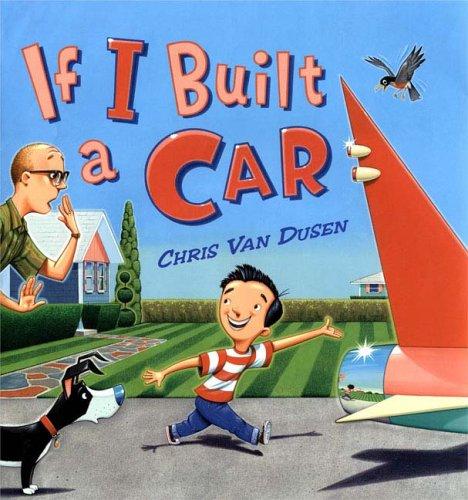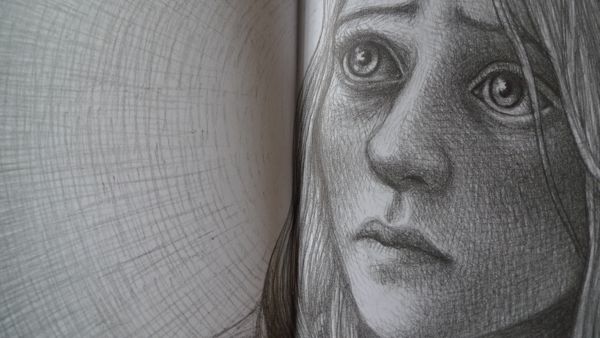
By Jon Agee
(Hyperion, 2008)
I’ll admit the cover illustration looks enticing: pathways meandering by palm trees, pink condos and blue sky. What a stark contrast to the black, rainy sky I took in as I began my daily 2 ½ hour commute to work at 5:45 this morning. The middle word of the title, in bold yellow block letters looks even more inviting. Alas. Like Space Mountain at Disneyland, the best rides have the longest waits.
Unless you’re Brian. He may be young, but poor Brian is worn out from the daily grind of schooldogwalkingviolinlessonsandeatyourbroccoli. Enough already! Brian summons the family to the living room and announces, “It’s been a wonderful eight years, but I need a break.”
Bravo, Brian.
And so young Brian does what all retired folk must do: he moves to Florida. What a life! Golf. Tennis. Middle of the day movies. But there’s also drawn out storytelling about surviving hip replacement surgery. And prune juice smoothies. Is Brian truly suited for retired life?
Something captivates me in Agee’s simple illustrations, particularly as to how he draws Brian’s companions at the Happy Sunset Retirement Community. The sum is certainly greater than the parts. Like comic strip art, a minimal number of lines and squiggles manage to create expressive, distinct characters. I longed for another book devoted entirely to Myrtle and her massive photo album of all her grandchildren. Time stands still as she smiles and points to yet another baby picture.
Throughout The Retired Kid, Agee conveys a gentle sense of humor that can be appreciated by young and old. Even those of us with hot flashes of retirement envy.
(Hyperion, 2008)
I’ll admit the cover illustration looks enticing: pathways meandering by palm trees, pink condos and blue sky. What a stark contrast to the black, rainy sky I took in as I began my daily 2 ½ hour commute to work at 5:45 this morning. The middle word of the title, in bold yellow block letters looks even more inviting. Alas. Like Space Mountain at Disneyland, the best rides have the longest waits.
Unless you’re Brian. He may be young, but poor Brian is worn out from the daily grind of schooldogwalkingviolinlessonsandeatyourbroccoli. Enough already! Brian summons the family to the living room and announces, “It’s been a wonderful eight years, but I need a break.”
Bravo, Brian.
And so young Brian does what all retired folk must do: he moves to Florida. What a life! Golf. Tennis. Middle of the day movies. But there’s also drawn out storytelling about surviving hip replacement surgery. And prune juice smoothies. Is Brian truly suited for retired life?
Something captivates me in Agee’s simple illustrations, particularly as to how he draws Brian’s companions at the Happy Sunset Retirement Community. The sum is certainly greater than the parts. Like comic strip art, a minimal number of lines and squiggles manage to create expressive, distinct characters. I longed for another book devoted entirely to Myrtle and her massive photo album of all her grandchildren. Time stands still as she smiles and points to yet another baby picture.
Throughout The Retired Kid, Agee conveys a gentle sense of humor that can be appreciated by young and old. Even those of us with hot flashes of retirement envy.







